Eight ways indoor training has changed since the arrival of smart trainers and Zwift
Since smart trainers hit the indoor cycling scene, and with them the likes of Zwift, turbo training has advanced rapidly. Check out how it's changed.
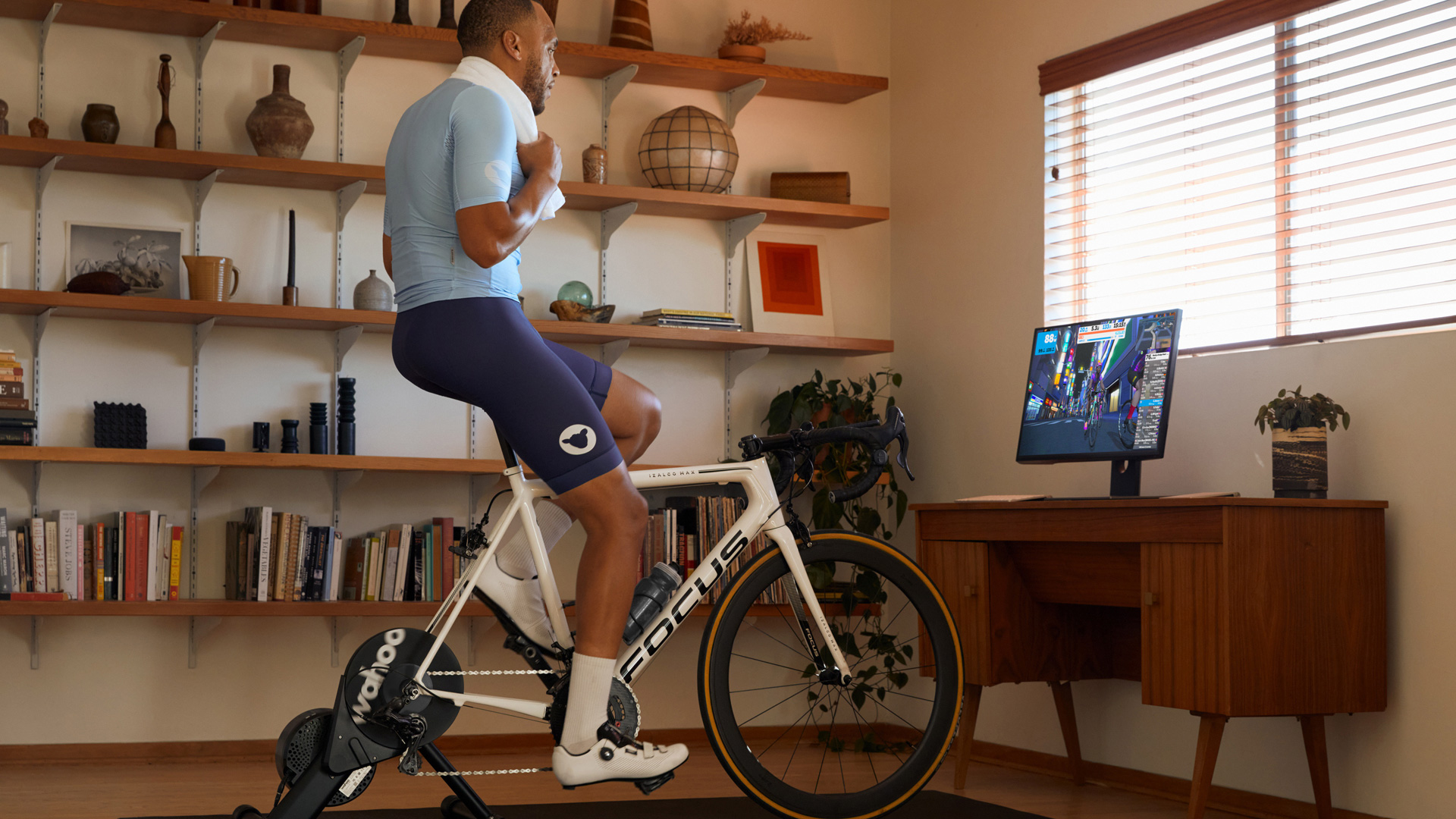
Indoor training has moved on quickly in the last decade or so, and with the advent of smart trainers, there’s far more to motivate you to jump on the bike and put in some hard efforts.
You could say that smart trainers have completely transformed indoor training. Not only are these modern turbos, bikes and rollers more advanced in themselves — think built-in power meters, wireless connection protocols, broad compatibility and low noise levels — they also connect to a wide range of apps and training software that help you workout more effectively or even take you into a virtual world where you can race and ride against like-minded people. A smart trainer or smart bike, such as the Zwift Ride, will set you back a bit more than a ‘classic’ trainer, but you’ll probably dread indoor cycling far less and, consequently, see far bigger fitness gains.
If you prefer the feel of rollers, a system such as the Wahoo KICKR ROLLR combines the natural motion of riding on rollers, the stability of a turbo trainer, and smart features.
Read on to discover eight ways in which smart trainers have revolutionised indoor training.
1) You can connect to your choice of training app
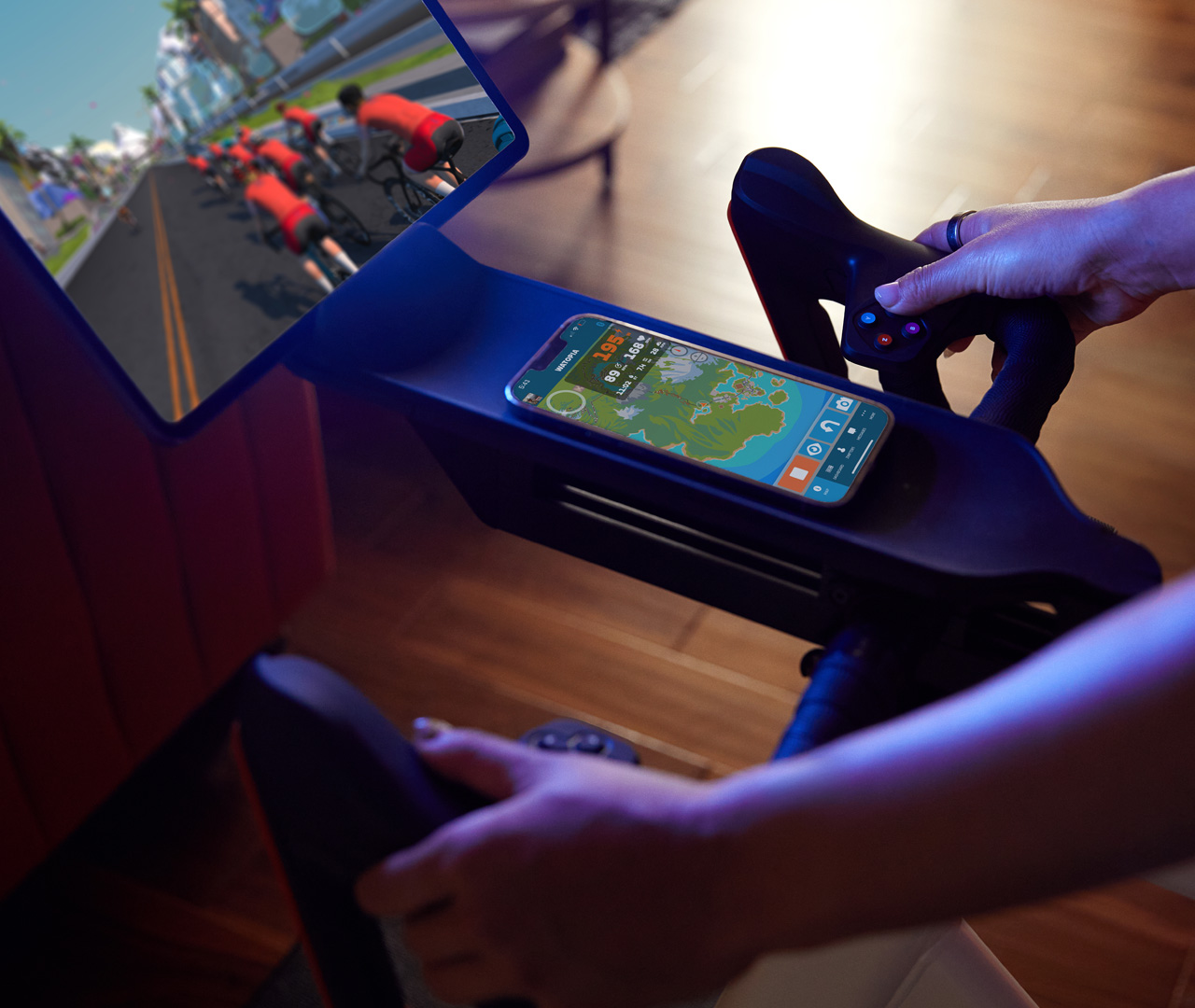
Connect to apps such as Zwift with the Zwift Ride smart bike
Long gone are the days of staring at a wall or watching a movie while you mindlessly pedal away, having to rely on your phone, watch or basic cycle computer to perform intervals. Smart trainers connect to apps on a laptop, tablet or smartphone via Bluetooth or ANT+ so you can follow a training session or ride in a virtual reality world like that provided by Zwift. Most apps have plenty of choice so simply pick a single session or follow a plan, and ride when it suits.
2) You can reap the benefits of group rides and races
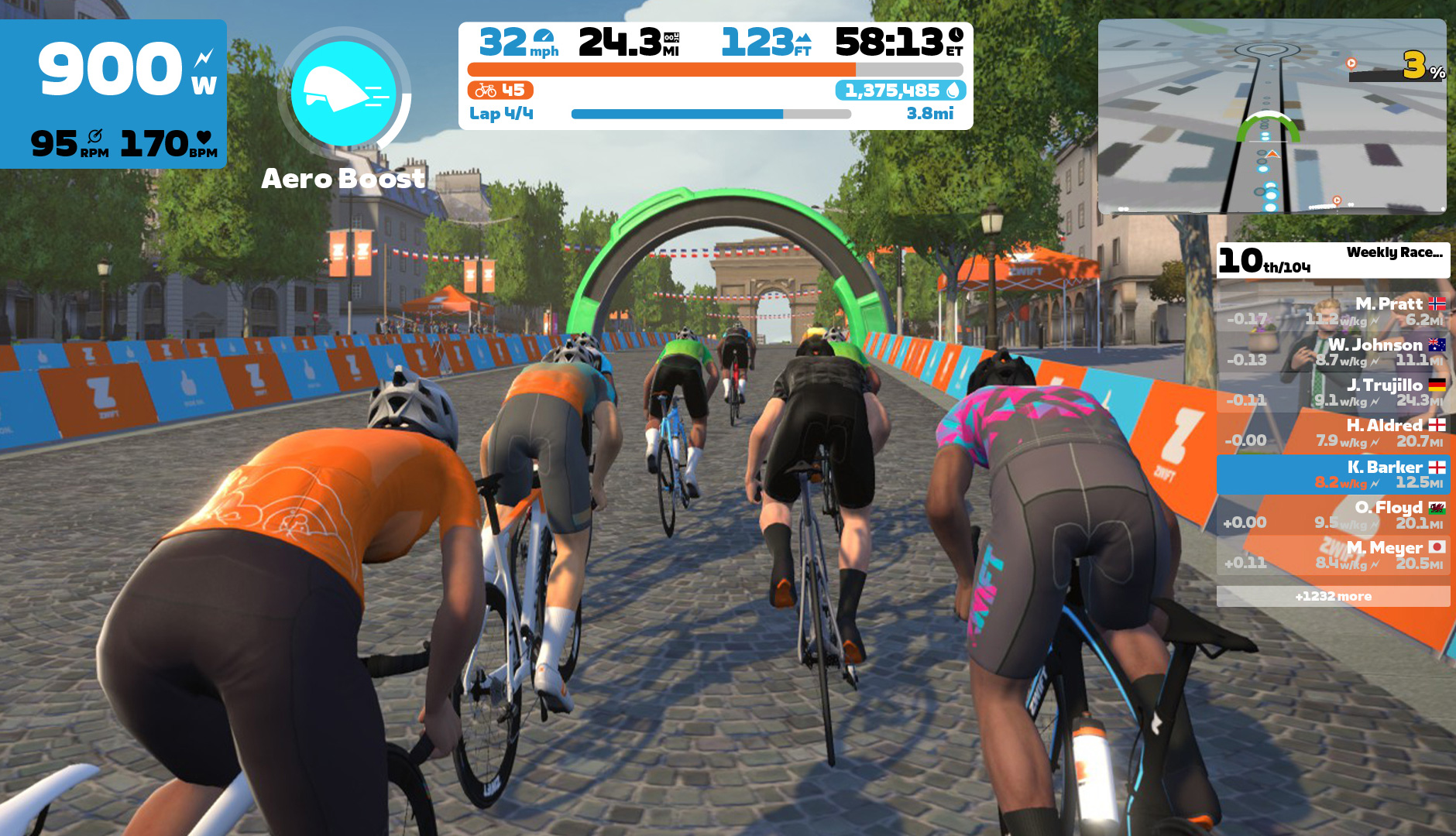
Zwift racing brings a competitive edge to indoor training
Zwift and other apps have a plethora of opportunities to make indoor training more fun, competitive, social, or all three. Often set within scenic routes, the rides and races are available day and night; such is the result of these being global platforms. Alternatively, create your own meetups with friends or clubmates. When using a smart trainer and Zwift together, for a bit of extra realism and fun, you can feel the effects of drafting, or even flick an elbow to encourage someone to do a turn.
The virtual cycling community is huge and Zwift even has its own messaging system so you can communicate with the riders around you via your desktop or the Zwift Companion App. A third-party app, Discord, also allows you to chat via voice, video or text. You may be training solo in your home, but you definitely don’t have to feel like you’re alone.
The latest race content, interviews, features, reviews and expert buying guides, direct to your inbox!
3) There's no need for a separate power meter
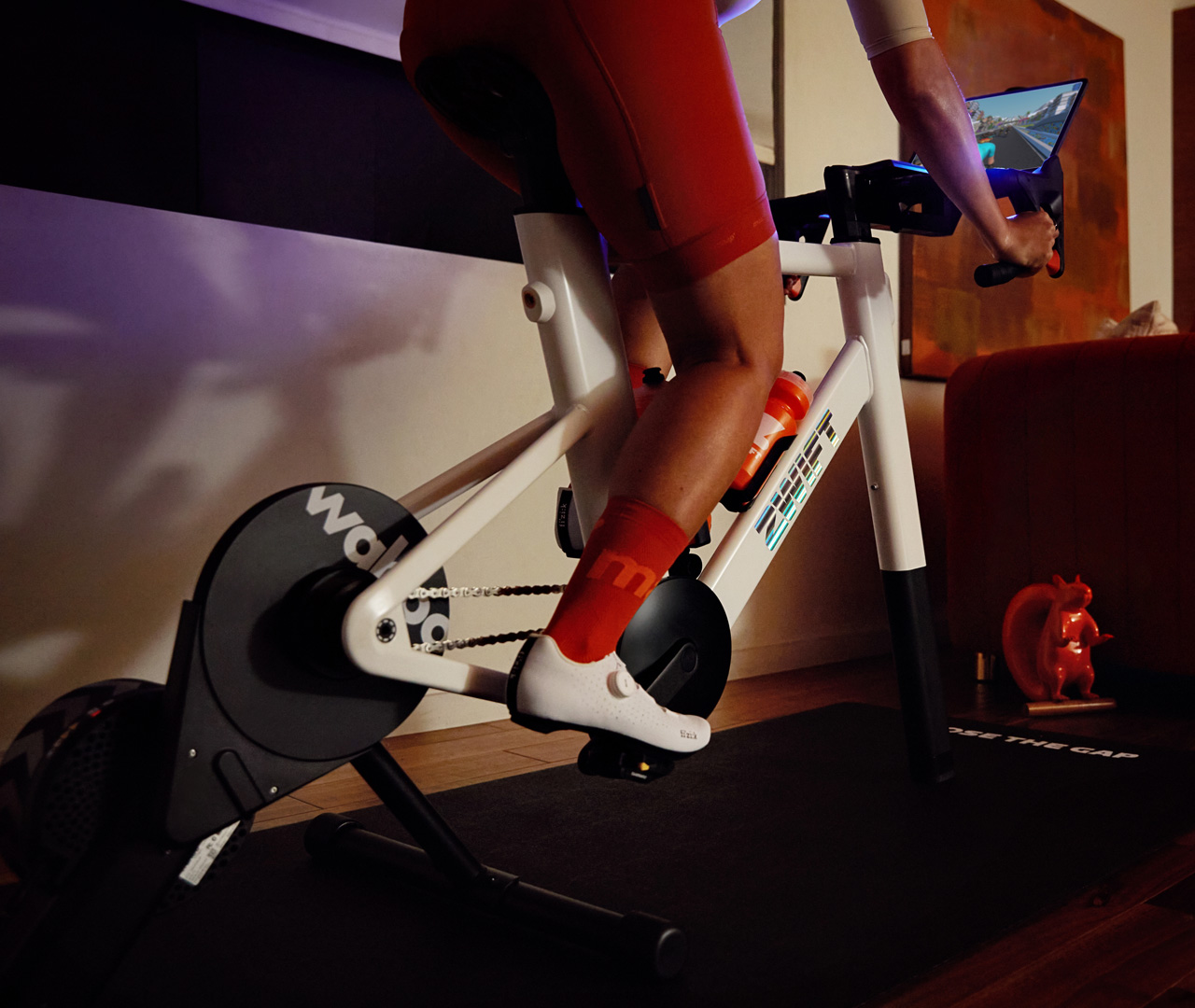
The Zwift Ride Smart Bike, like all smart trainers, has power measurement built in, so there's no need for a separate power meter
Most smart trainers have built-in power meters or, at the least, fairly accurate power estimation, so there’s no requirement to have one on your bike. So when you invest in a smart trainer, it provides you with a way to measure your watts and cadence, as well as linking to other sensors such as a heart rate monitor. A smart turbo trainer makes far more data about your workout available to you.
4) Gradients will be matched by resistance changes
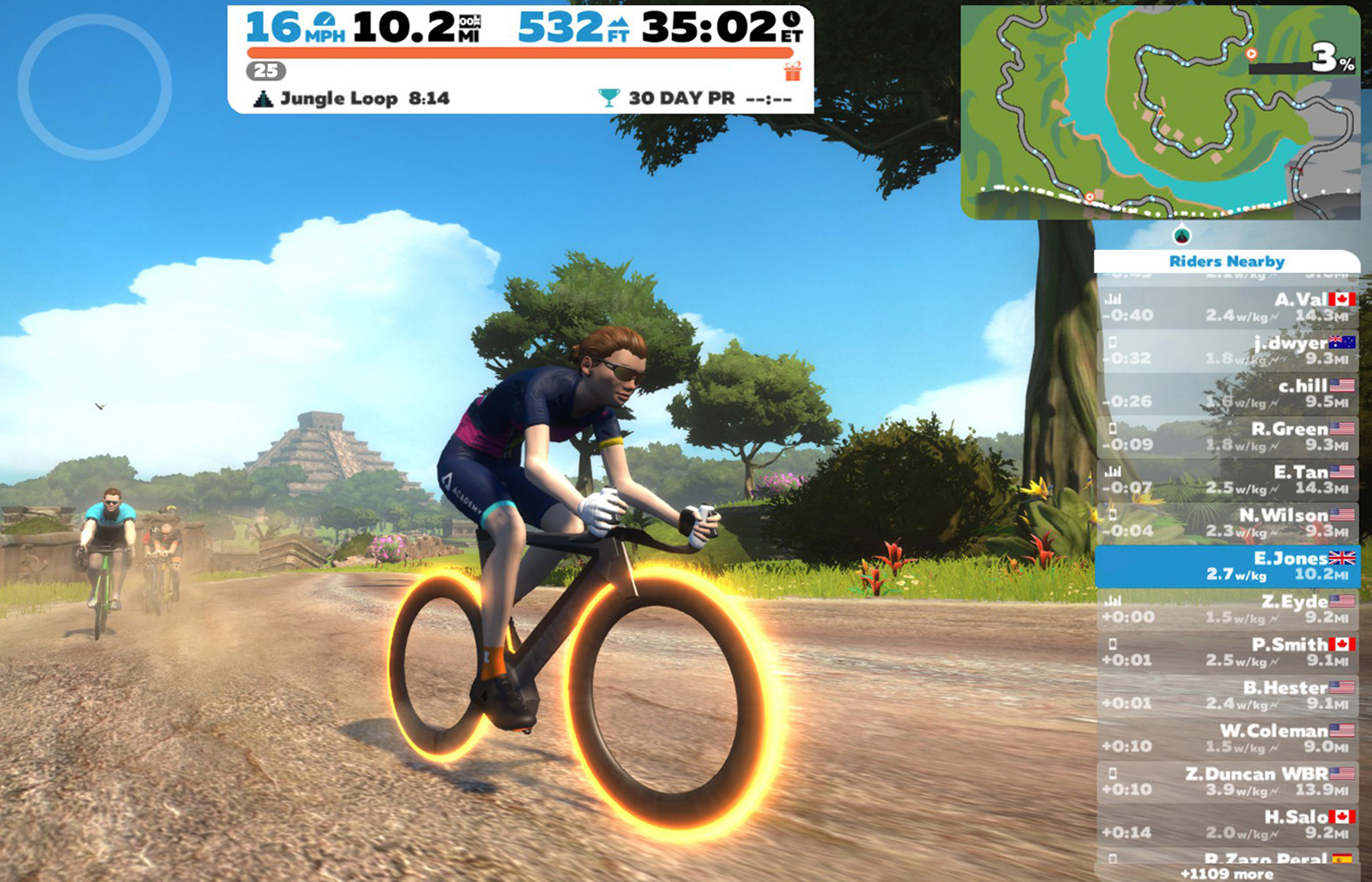
Smart trainers match gradients with resistance changes
A smart trainer replicates the parcours, something a classic trainer won’t do. When you’re ascending, the resistance increases accordingly. They’re not all created equal; some smart turbos will match 20% gradients, some 15%, some less. If your app of choice includes virtual versions of real climbs, you can tackle the likes of Mont Ventoux or Alpe d’Huez and get a feel for the mountain’s steepness. It just makes the whole experience far more realistic.
If you want to stretch the realism even further, invest in a Wahoo KICKR CLIMB gradient simulator, which will match virtual climbs up to 20% with physical changes, as well as descents down to 10%.
5) ERG mode makes it easier to stick to intervals
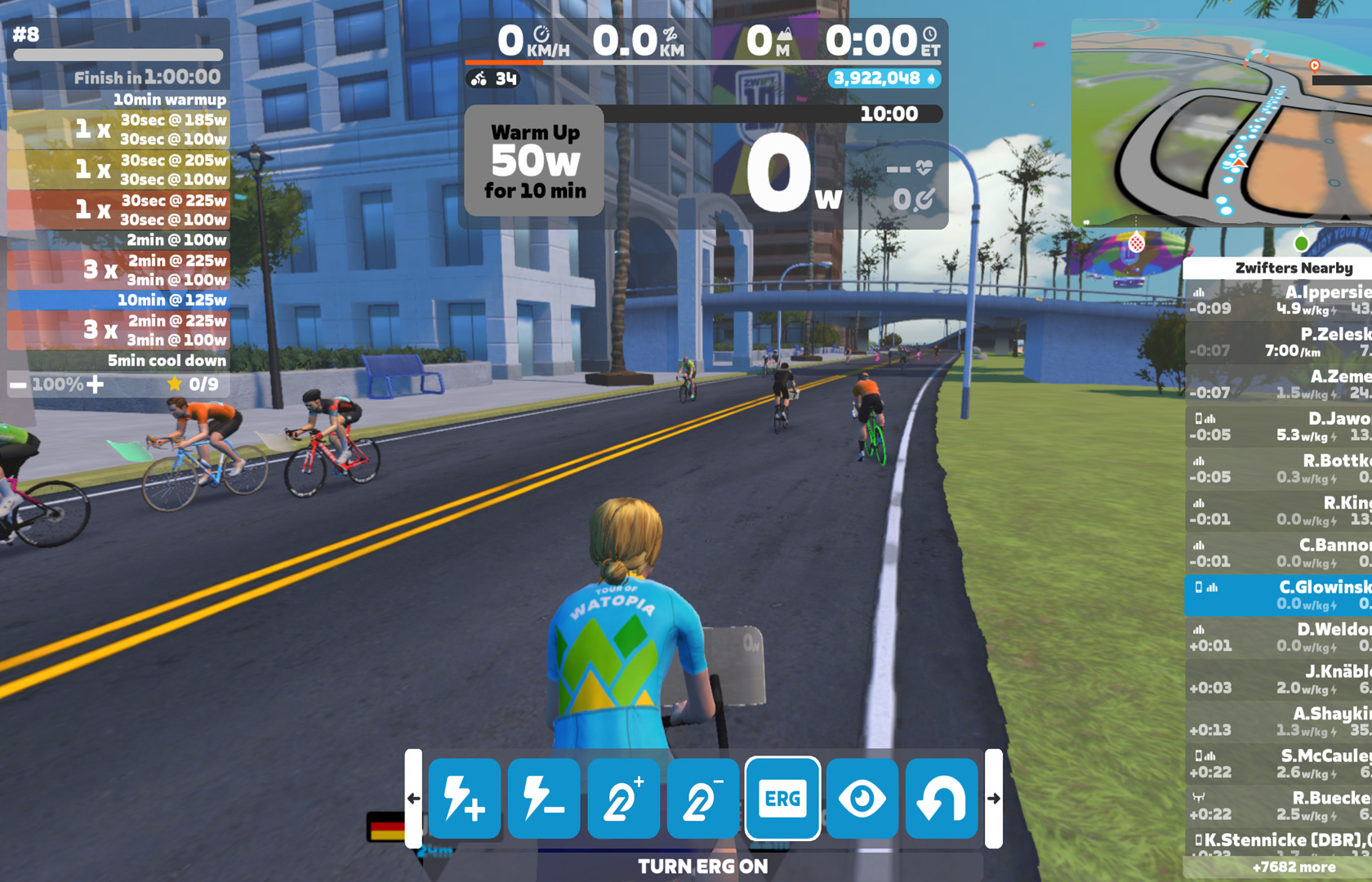
Switch ERG mode on to help you stick to intervals during a workout
ERG mode is a real game changer when it comes to indoor training. Whereas a classic trainer requires you to try and maintain required watts yourself (which can be pretty hard!), ERG mode is a workout-specific feature that’ll keep you at the power needed to complete an interval (and to keep you from going too hard between them).
Wattage outputs are determined by cadence. So if you’re required to stay at 200 watts and you start the interval spinning at 100 rpm, if you then reduce your cadence to 70 rpm, resistance will increase to compensate. You don’t need to shift (you can, but it’s not recommended unless you’re struggling) but simply focus on pushing on the pedals, so there’s less to think about.
One thing to keep in mind… if fatigue hits and you slow your pedalling, it’s easy to fall into the ‘spiral of death’ as resistance continues to increase until you can no longer pedal. But don’t let this put you off, ERG mode is a very effective way of training and one of the main features that makes smart trainers stand out from the rest. You can always lower your bias to make targets easier to hit if you’re having an off day.
6) ERG mode helps you pace your efforts
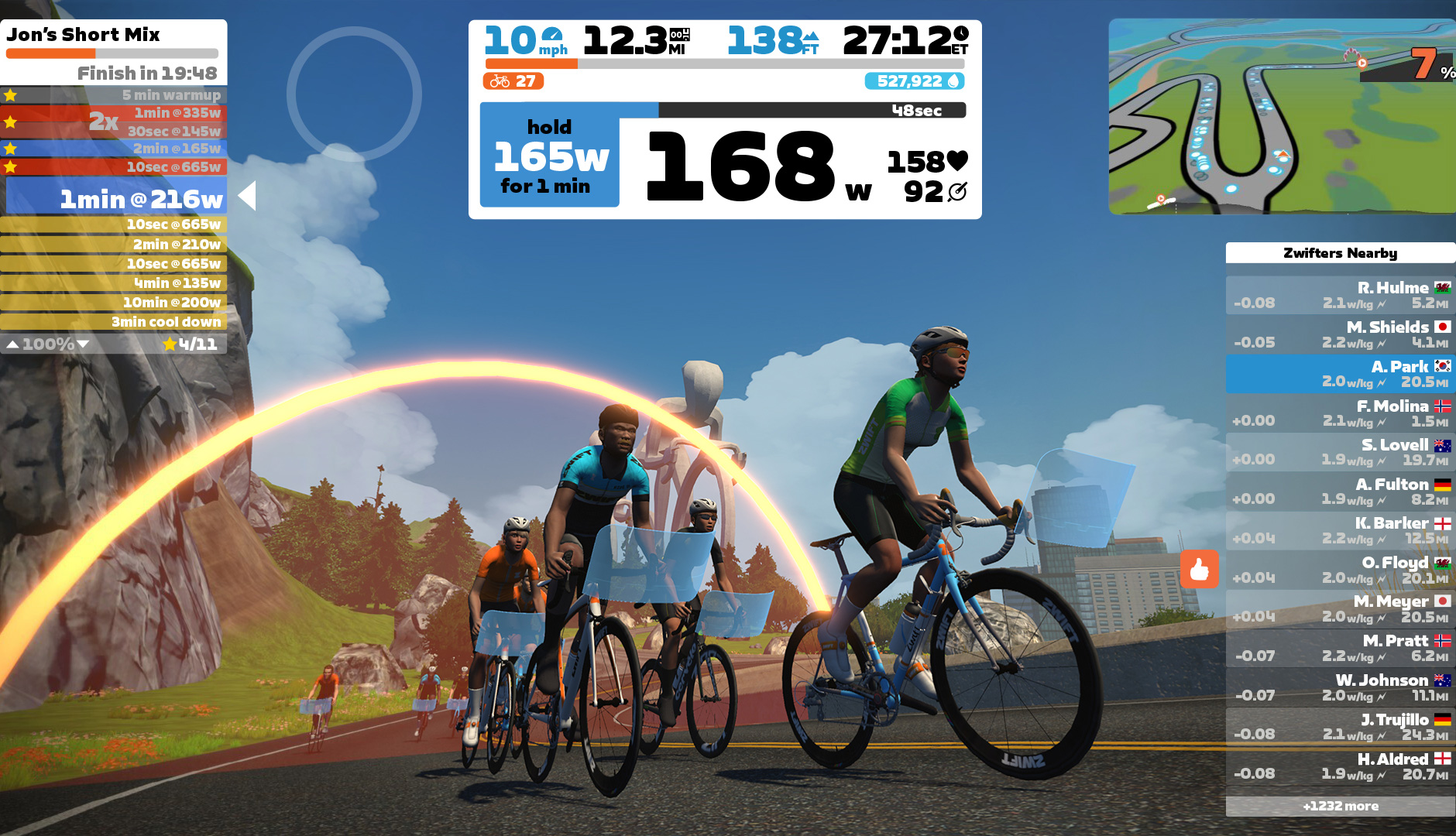
Use ERG mode during Zwift workouts to pace efforts
It can be quite hard to maintain stable power during an effort. You may be one of those people that hits every interval too hard and eventually runs out of energy, but with ERG mode power remains stable throughout, so there’s no chance of this happening. If you pedal faster, resistance will just decrease.
7) Smart trainers are much quieter
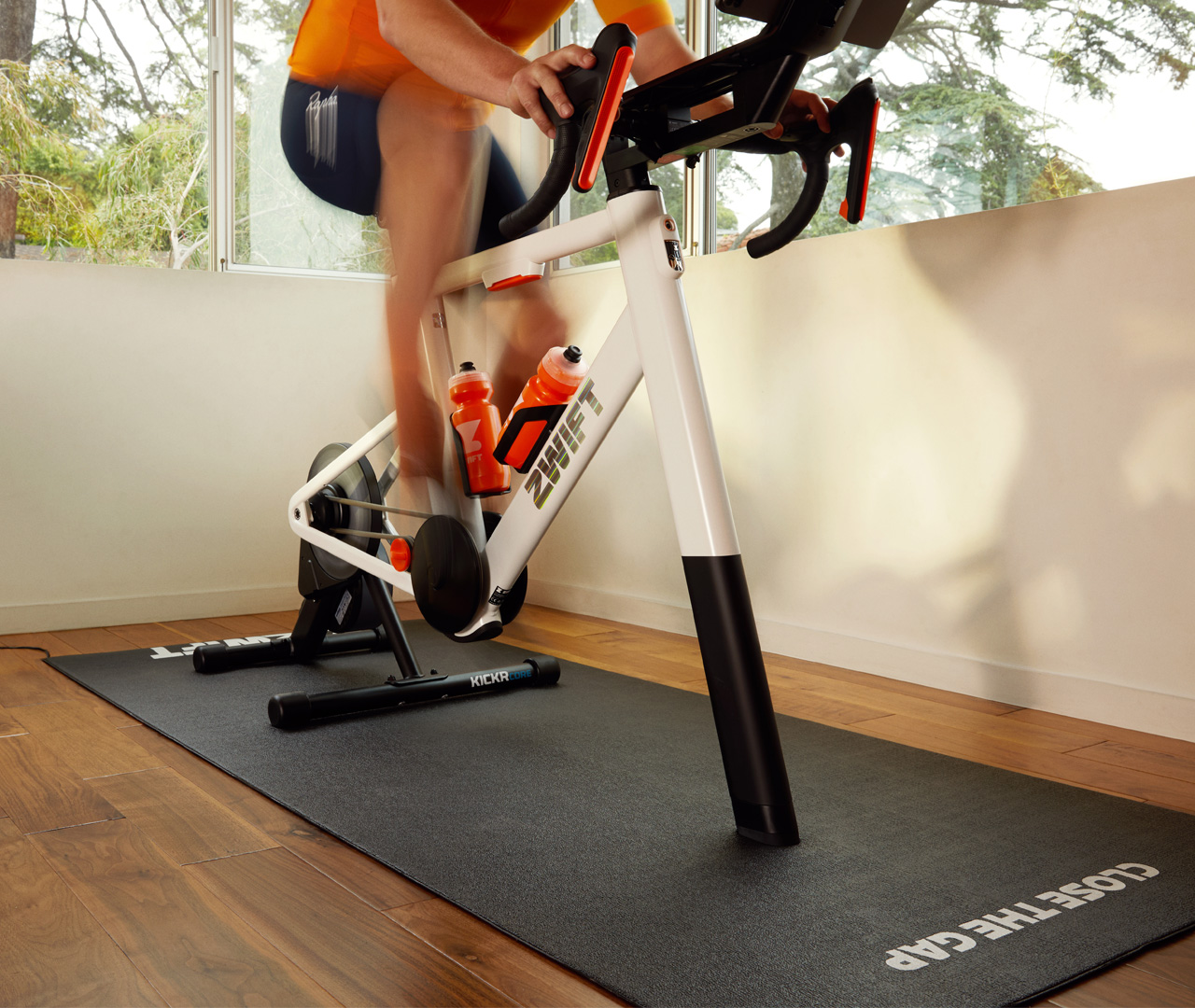
Smart trainers are far quieter than non-smart, and you can use a training mat to damp noise further
It can get pretty noisy during an indoor training session, particularly when you’re putting the power down, making it quite an anti-social activity in a shared home or in one with thin walls. Of course, you can try to damp the noise down with a training mat but modern smart trainers tend to be far quieter than older machines, and therefore a better experience for you, and your family/housemates/neighbours.
8) With a direct drive trainer, you won't wear out expensive tyres
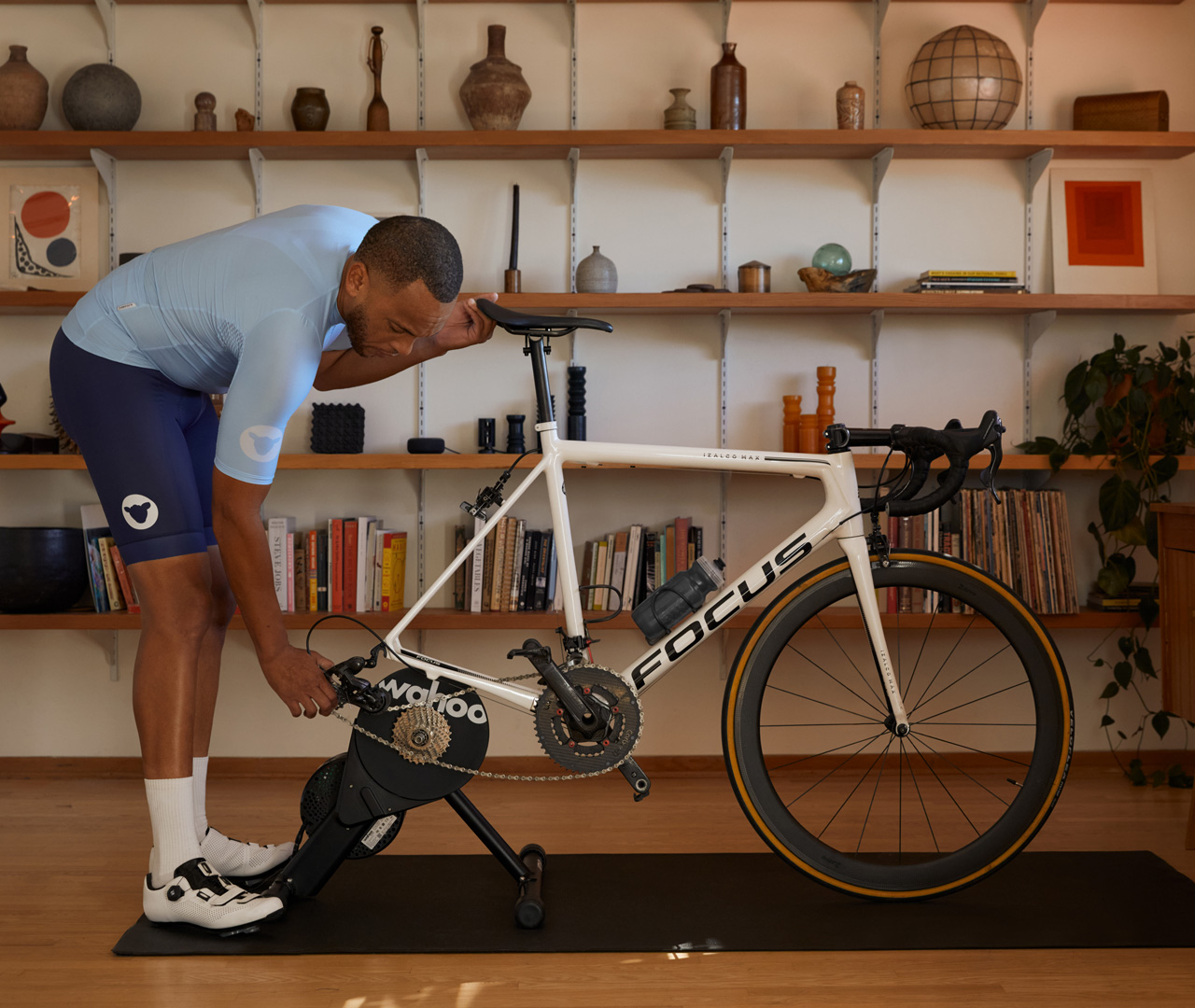
Using a direct drive turbo trainer means you won't wear out expensive road tyres
You can get wheel-on smart trainers, which tend to me more wallet-friendly, however they're few and far between — the majority being direct drive. This means that you won’t wear out an expensive tyre through a winter of training, or have to purchase a turbo trainer tyre as tends to be the other option on older wheel-on style units.
A cyclist for over 10 years, Cat started on the road and track, and now loves riding the trails and racing cyclocross. A freelance writer with many years of experience, when not writing or turning left at Herne Hill Velodrome, she likes to spend her time in the mountains, preferably on a bike or snowboard.
-
 USA Cycling unveils 2026 National Championship schedule with 21 events throughout the year
USA Cycling unveils 2026 National Championship schedule with 21 events throughout the yearFrom cycling eSports in January to cyclocross in December, here are the dates and locations for the 2026 season
-
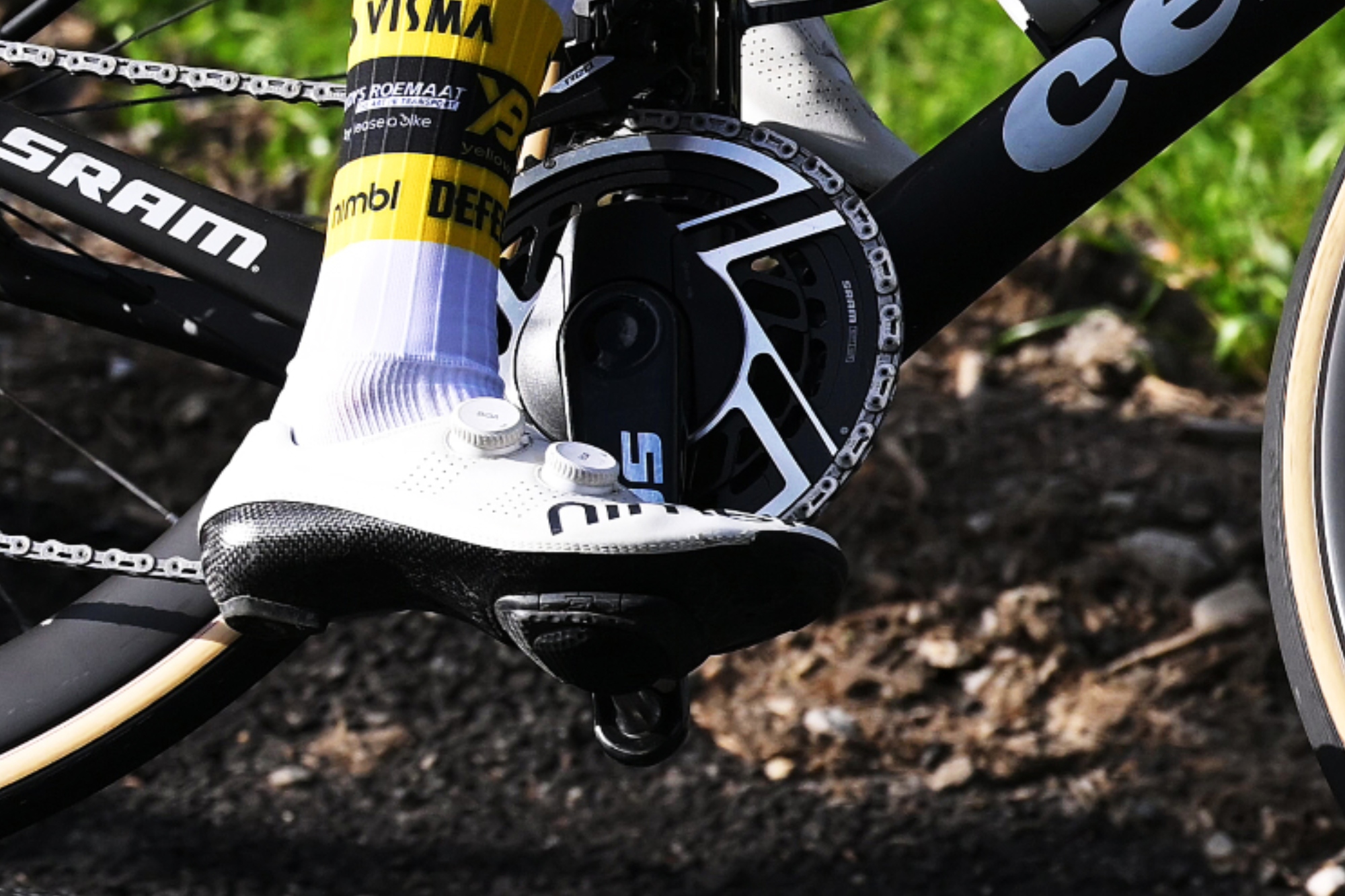 Visma-Lease a Bike spends thousands each season buying its own pedals — here’s why
Visma-Lease a Bike spends thousands each season buying its own pedals — here’s whyDespite having component sponsors, the WorldTour team purchases Speedplay pedals outright. The “wildly misunderstood pedal" has become a quiet constant inside the team’s setup